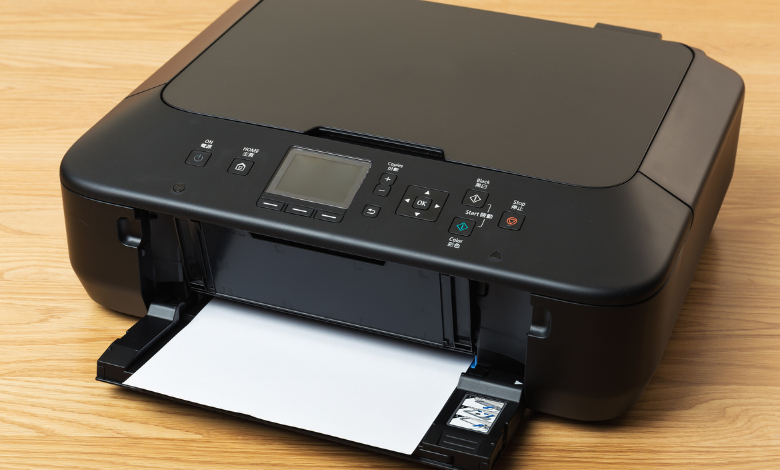What type of printer paper does kodak g6000 use

When choosing the right printer paper for a specific printer model, several factors come into play, including the type of printer, the quality of prints required, and the type of projects the printer will be used for. For Kodak’s G6000 series, knowing the best type of paper to use can greatly affect the final print quality and longevity of your prints.
The Kodak G6000 series is a popular line of high-performance inkjet printers designed to cater to both personal and professional printing needs. Whether you’re printing photos, documents, or other materials, the right paper choice can optimize your printing experience, offering crisp text, vibrant colors, and durability.
In this article, we will explore what type of paper the Kodak G6000 uses, discuss the different types of paper compatible with the printer, and provide recommendations for the best paper for various printing needs.
1. Overview of the Kodak G6000 Printer Series
The Kodak G6000 series is a family of inkjet printers designed primarily for home and office use. These printers are well-known for their impressive photo print quality, cost-effective printing solutions, and ability to handle a variety of print tasks. One of the standout features of the Kodak G6000 series is its ability to print vibrant, high-quality images while keeping operational costs relatively low, making it an excellent choice for anyone who needs to print photos, documents, and graphics regularly.
Kodak has established a reputation for producing high-quality photo printers, and the G6000 series builds on that legacy with a focus on performance, reliability, and ease of use. These printers are equipped with advanced inkjet technology that produces sharp and crisp prints, and they are compatible with a wide range of paper types and sizes.
Despite its versatility, achieving the best print quality requires using the correct printer paper. Kodak G6000 printers can print on several types of paper, from plain office paper to glossy photo paper. But to ensure the best performance and longevity of your prints, it’s crucial to use the right paper type for each specific printing job.
2. Importance of Choosing the Right Paper
Selecting the correct paper for your printing needs is more than just a matter of preference—it’s a key factor in ensuring your prints turn out as expected. The type of paper you use can affect several aspects of the print job, including:
- Print Quality: The surface texture and coating of the paper can influence how well the ink adheres, resulting in sharper text, more vibrant colors, and more accurate details, especially in photos.
- Ink Usage: Some types of paper, particularly those designed for photo printing, require more ink than standard paper. Using the wrong type of paper can lead to wasted ink or smudging.
- Durability: Certain papers are designed to be more durable, which is especially important for photo prints or materials that will be handled frequently.
- Cost Efficiency: Using paper that is compatible with the printer helps to reduce ink consumption, preventing unnecessary costs in both paper and ink.
- Printer Compatibility: Not all printers work well with every type of paper. Choosing the wrong paper can lead to paper jams, poor ink distribution, or even damage to the printer.
Thus, understanding the different types of paper that work well with your Kodak G6000 can greatly enhance your printing experience and ensure that your prints are of the highest quality.
3. Types of Printer Paper for Kodak G6000
The Kodak G6000 printer is highly versatile and supports a wide range of paper types. Depending on your needs—whether you’re printing text documents, photos, or projects—selecting the right paper will ensure the best results.
Here are the most common types of paper you can use with the Kodak G6000:
A. Plain Paper
Plain paper is the most common and cost-effective paper for everyday printing needs. It is ideal for text-heavy documents, reports, and general-purpose printing. Kodak G6000 printers are fully compatible with plain paper, which provides a balance between print quality and cost.
When choosing plain paper for your Kodak G6000, consider the following:
- Weight: Standard weight for plain paper is 20 lb (75 g/m²). Heavier paper (such as 24 lb or 90 g/m²) can offer better print quality, particularly for text.
- Finish: Plain paper generally has a smooth, non-glossy finish. If you need a bit more texture or professional appearance, you may opt for linen or cotton-textured papers.
B. Photo Paper
For high-quality photo prints, photo paper is the best choice. Kodak offers its own brand of photo paper, which is designed to complement the capabilities of the G6000 series. Photo paper is coated with a special finish that allows ink to dry quickly and creates vibrant, sharp prints.
Types of photo paper include:
- Glossy Photo Paper: Ideal for printing high-resolution photos with rich color and shine. Glossy photo paper gives photos a vibrant look but may produce glare when viewed under bright light.
- Matte Photo Paper: Offers a non-reflective surface, which is perfect for photos that require a more subtle, understated finish. Matte paper is also fingerprint-resistant, making it great for photos that will be handled.
- Satin/Semi-Gloss Paper: A hybrid between glossy and matte paper, satin photo paper provides excellent color saturation without the shine of glossy paper.
Kodak’s photo paper is optimized for printing vivid images, and using the right photo paper will result in professional-quality prints with rich color accuracy and sharpness.
C. Cardstock
Cardstock is a thicker and more durable paper, perfect for printing invitations, cards, brochures, and other marketing materials. The Kodak G6000 can print on various types of cardstock, including matte and glossy options, allowing you to produce high-quality prints for professional use.
Cardstock typically comes in various weights, from 60 lb to 110 lb (163 g/m² to 298 g/m²), and you can select the thickness depending on your project. The heavier the cardstock, the more care it requires when loading into the printer to avoid jamming.
D. Presentation Paper
Presentation paper is designed for printing presentations, reports, and other materials that require a professional finish. It has a slightly heavier weight than regular plain paper and is usually coated to provide enhanced brightness and sharpness.
Kodak G6000 printers can use presentation paper to produce documents that look more polished, with rich color and clarity. This paper type is often used for printing proposals, resumes, or any document that requires a touch of professionalism.
4. Paper Sizes Supported by Kodak G6000
The Kodak G6000 series printers support a wide range of paper sizes, making them versatile enough for printing documents and photos of various dimensions. Some of the common paper sizes supported by the Kodak G6000 include:
- A4 (8.3 x 11.7 inches): This is the standard paper size for most office and home printing needs.
- Letter (8.5 x 11 inches): Common in North America, letter-size paper is typically used for printing standard documents.
- Legal (8.5 x 14 inches): For legal-sized documents, often used for contracts and agreements.
- 4 x 6 inches: This is the standard photo paper size for printing high-quality photos.
- 5 x 7 inches: A slightly larger photo size, commonly used for framing or creating greeting cards.
- A3 (11.7 x 16.5 inches): Larger format for posters, flyers, or other high-quality print materials.
Before printing, it’s essential to load the printer with the appropriate paper size for the task. Most printers, including the Kodak G6000, come with adjustable paper trays to accommodate different paper sizes.
5. Recommended Paper Brands for Kodak G6000
While Kodak offers its own brand of paper, many third-party brands also produce high-quality paper compatible with the Kodak G6000. Some recommended brands for printing on the Kodak G6000 include:
- Kodak Premium Photo Paper: Specifically designed for Kodak printers, it provides excellent color reproduction and durability.
- HP Advanced Photo Paper: Known for its glossy finish and high-quality photo output, this paper is a great choice for printing professional-grade photos.
- Canon Pro Platinum: Ideal for professional photographers, this paper has a high-end, glossy finish that brings out the best in printed photos.
- Epson Premium Glossy Paper: A solid choice for those who need glossy prints with vivid color.
When choosing a third-party brand, make sure that the paper is labeled as compatible with inkjet printers and has a suitable finish for your printing needs.
6. Best Paper for Photo Printing
When printing photos, the quality of the paper is just as important as the printer and ink. Kodak’s premium photo paper is optimized for the Kodak G6000, ensuring vibrant and crisp prints with minimal smudging. For the best photo prints, consider the following options:
- Kodak Premium Glossy Photo Paper: Best for producing vibrant, high-quality glossy photo prints.
- Kodak Premium Matte Photo Paper: Ideal for a professional, non-glossy finish that reduces glare.
- Canon Pro Glossy Paper: For exceptional color fidelity and rich saturation, perfect for photographers who want to showcase their work.
7. Best Paper for Document Printing
For text documents, standard office paper or presentation paper is your best choice. For documents requiring higher professionalism or durability, such as resumes or business presentations, you may want to use heavier-weight presentation paper. If you are printing large documents or contracts, you may also want to use legal-size paper for better formatting.
8. Tips for Achieving the Best Print Quality
- Choose the Right Paper: Always select paper designed for the type of printing you are doing—photo paper for images, presentation paper for documents, etc.
- Load Paper Properly: Ensure the paper is loaded correctly in the printer to avoid jams or misfeeds.
- Use High-Quality Ink: The printer’s ink should match the quality of the paper. Consider using Kodak-branded ink for optimal performance.
- Printer Settings: Adjust printer settings to match the paper type you are using. Many printers, including the Kodak G6000, offer paper type settings in the printer software.
9. How Paper Affects Ink Usage
The type of paper you use will affect how much ink is consumed during printing. Glossy papers tend to absorb more ink than matte or plain papers, resulting in more vibrant colors but also increased ink consumption. This is an important consideration if you’re printing large quantities of photos or color-heavy documents.
10. Conclusion
Choosing the right paper for your Kodak G6000 printer is essential for ensuring the highest quality prints. Whether you’re printing photos, documents, or other materials, the type of paper you use can significantly impact the overall results. Kodak offers a range of papers designed to work seamlessly with its G6000 series printers, including premium glossy photo paper for photo printing and heavier-weight papers for professional documents.



